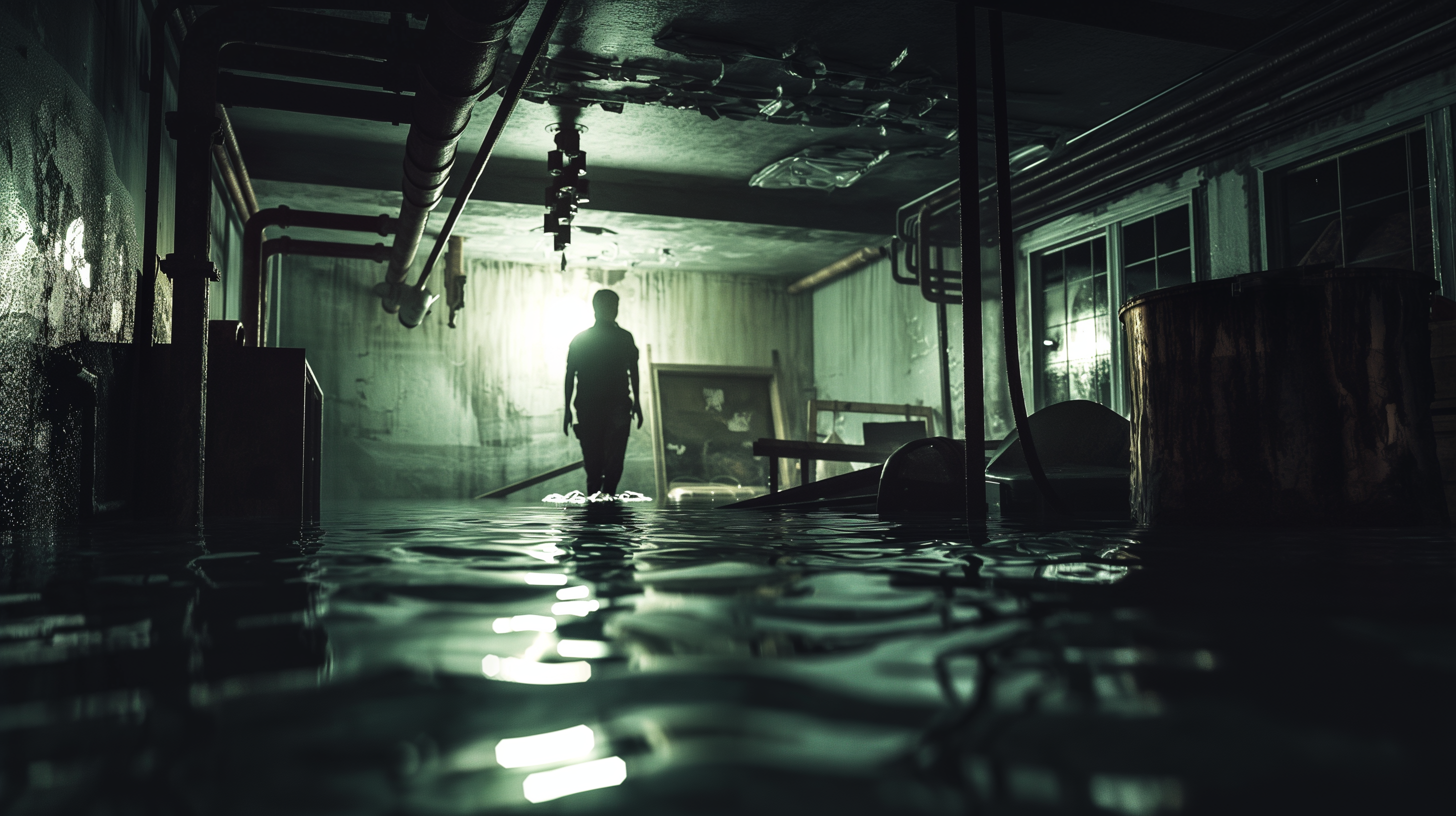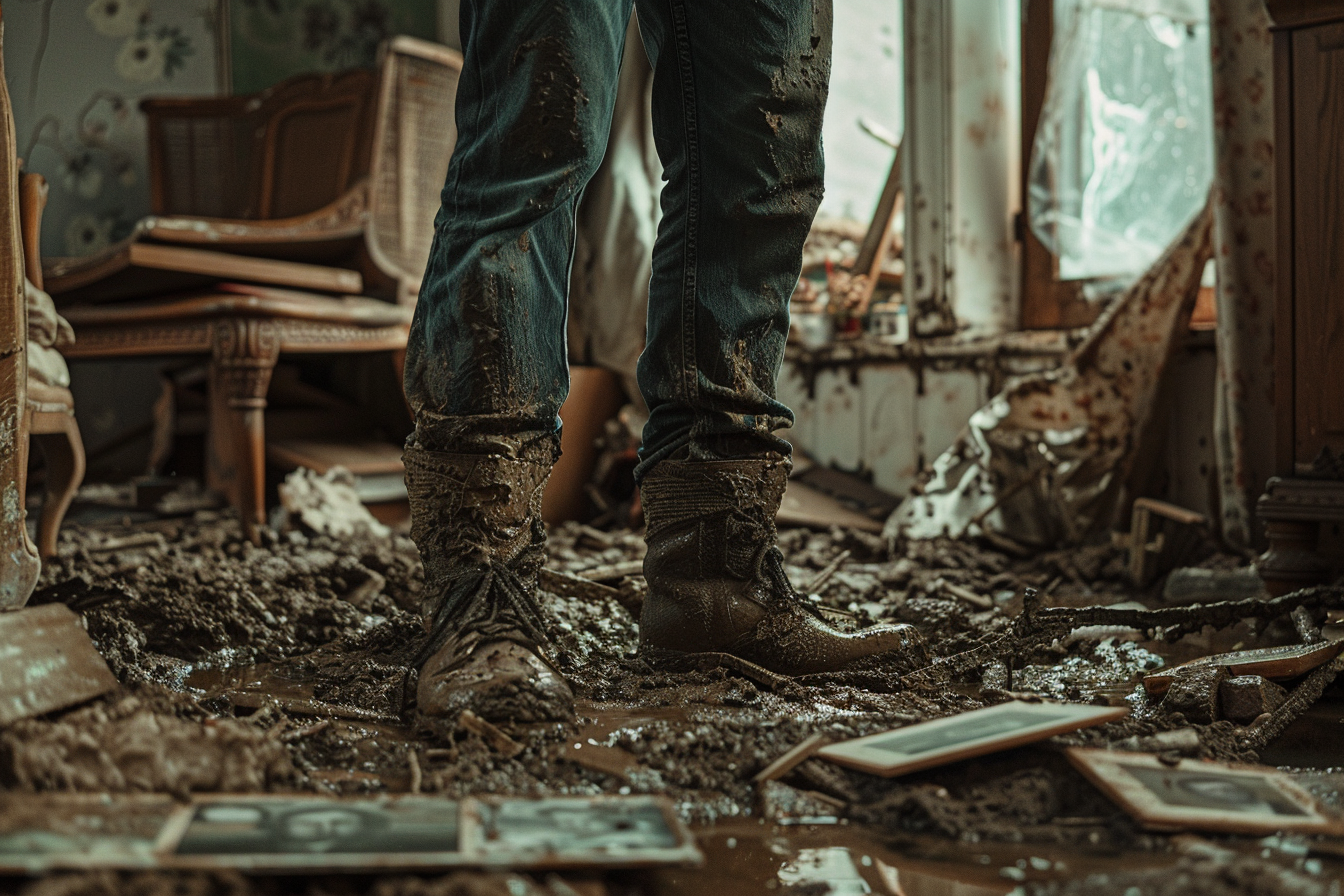
Floods can be devastating, leaving homes, businesses, and communities in need of extensive recovery efforts. Whether it’s a few inches of water in your basement or more severe flooding, the aftermath can feel overwhelming. The key to an efficient and effective flood cleanup lies in being prepared with the right tools. With the proper equipment, you can mitigate damage, remove debris, and begin the process of restoring your space.
In this guide, we’ll cover the ten essential tools you need for flood cleanup and explain why a portable water spraying solution, such as RinseKit, is an indispensable part of the process. While cleanup is labor-intensive, having the right tools on hand can make a significant difference.
1. Protective Gear
Floodwater is often contaminated with sewage, chemicals, and other harmful substances. Protecting yourself should be the first priority during cleanup. Essential protective gear includes waterproof boots, rubber gloves, safety goggles, and face masks or respirators. These items help shield you from exposure to bacteria, mold, and hazardous materials present in floodwater.
Ensuring you have the right protective gear minimizes your risk of infections and other health problems associated with flood exposure.
2. Heavy-Duty Trash Bags
Flood damage leaves behind a significant amount of waste, from soaked furniture and insulation to ruined personal belongings. Heavy-duty trash bags are essential for collecting and disposing of flood-damaged materials. Choose bags that are tear-resistant and capable of holding heavy, waterlogged items to avoid leaks or spills during disposal.
These bags will allow you to clear out affected areas efficiently, helping you prevent further contamination and streamline the cleanup process.
3. Wet/Dry Vacuum
A wet/dry vacuum is a crucial tool for removing standing water from floors, carpets, and furniture. Unlike regular vacuums, these are designed to handle both liquids and solids, making them ideal for extracting floodwater. Choose a vacuum with a large tank capacity to reduce the number of times you’ll need to empty it, especially if you’re dealing with a large area.
Wet/dry vacuums can also help suck out water from hard-to-reach places, such as under cabinets or in tight corners, speeding up the overall drying process.

4. Squeegee or Mop
Even after the bulk of the water is removed, residual moisture will likely remain on hard surfaces like floors, tiles, or countertops. Using a squeegee or heavy-duty mop helps you clear out this leftover water, preventing mold growth and additional water damage. Squeegees are especially useful for pushing water off smooth surfaces, while a mop is handy for absorbing any remaining moisture.
This step is vital in ensuring that floors, walls, and other surfaces dry completely to avoid long-term damage.
5. Disinfectant and Cleaning Supplies
Once you’ve removed the water, disinfecting affected areas is crucial. Floodwaters are often contaminated with harmful bacteria and viruses, so using strong disinfectants is necessary to sanitize your space. Be sure to clean all surfaces that came into contact with floodwater, including walls, floors, and furniture.
Having basic cleaning supplies, such as scrub brushes, sponges, and microfiber cloths, on hand will help you tackle tough dirt and grime left behind by the water.
6. Dehumidifiers and Fans
After water removal, reducing moisture levels is key to preventing mold and mildew. Dehumidifiers and fans help circulate air and lower humidity, which can otherwise remain elevated even after standing water is cleared. Place fans and dehumidifiers in strategic locations around the room, and let them run continuously for several days to ensure the space is thoroughly dried.
This step is particularly important in closed spaces, like basements, where moisture tends to linger.
7. Shovels and Buckets
Floods often bring in dirt, mud, and debris, especially in basements or low-lying areas. Shovels and buckets are essential for scooping and removing mud and other debris from affected areas. Choose a sturdy shovel with a long handle to make the job easier, and have several buckets ready to transport debris out of the house.
These tools will help you clear the area quickly, making room for the more detailed cleaning to come.
8. Moisture Meter
Even if an area appears dry, moisture can still be present in walls, floors, and furniture, which can lead to mold growth or structural damage if not addressed. A moisture meter allows you to measure moisture levels in various materials, helping you determine if further drying is needed. Use it to check for hidden dampness before moving on to repairs or renovations.
By confirming that moisture levels are low, you’ll avoid the risk of mold forming later on.
9. Portable Generator
Floods often lead to power outages, leaving you without electricity for essential tools like vacuums, fans, and dehumidifiers. A portable generator ensures that you can keep your equipment running during cleanup, even if the main power supply is down. Make sure the generator can handle the wattage of your tools and is safe for indoor use, if necessary.
Having a portable generator on hand ensures that the cleanup process can continue uninterrupted, regardless of the availability of power.
10. Portable Water Spraying Solution
A portable water spraying solution is an invaluable tool during flood cleanup, especially when you need to wash away dirt, debris, and contaminants from affected surfaces. This is where RinseKit comes in. RinseKit offers a powerful, pressurized water flow without needing an external water source or electricity, making it perfect for flood recovery.
What is RinseKit?

RinseKit is a portable, pressurized water system that delivers consistent water pressure without needing hoses, external power, or pumps. Originally designed for outdoor enthusiasts who need a quick and convenient way to rinse off, RinseKit has proven to be an essential tool for a variety of applications, including flood cleanup. Its portability and ease of use make it a versatile solution for cleaning surfaces, removing debris, and washing away contaminants when access to running water is limited.
The battery-powered pump in RinseKit provides a consistent spray, allowing you to clean muddy floors, walls, and outdoor areas quickly. Its portability means you can move it around freely, getting water where it’s needed most, without relying on a functioning plumbing system. With up to 4 gallons of water capacity and models providing up to 7 minutes of continuous spray time, RinseKit offers ample cleaning power for even the toughest post-flood conditions.

RinseKit’s easy-to-use design is another advantage. Simply fill the tank with water, press the power button, and start spraying. You’ll have access to pressurized water for cleaning away mud, grime, and contaminants, which is crucial in a flood cleanup situation where immediate sanitation is required. If you need warm water for better cleaning, RinseKit’s accessories, like the HyperHeater, can even provide hot water, making sanitizing contaminated areas more effective.

Flood cleanup is a challenging and often overwhelming process, but having the right tools can make a significant difference. From protective gear to wet/dry vacuums, each tool plays a critical role in cleaning and restoring flood-damaged areas. Among these, a portable water spraying solution like RinseKit stands out as an essential tool, providing pressurized water in areas where access to clean, running water may be limited.
Whether you’re washing away mud, cleaning off contaminated surfaces, or simply trying to sanitize your home, RinseKit’s portability and ease of use make it a game-changer in flood recovery efforts. By adding RinseKit to your flood cleanup toolkit, you’ll be better prepared to tackle the challenges ahead and restore your space quickly and effectively.



